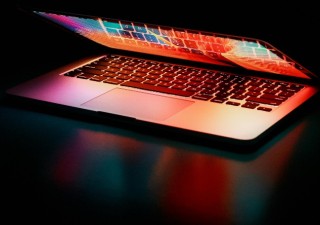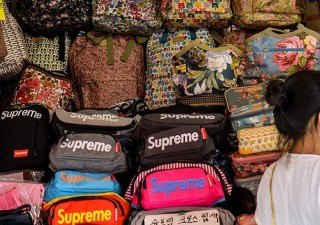Winning The Race Between AI & Copyright
28 February 2019
 As artificial intelligence becomes more sophisticated, copyright law races to catch up. By Johnny Chan.
As artificial intelligence becomes more sophisticated, copyright law races to catch up. By Johnny Chan.
As artificial intelligence is becoming more and more sophisticated, many predict that the copyright issues or lawsuits on works generated by AI will become much more complex – and that even specialized IP courts and experienced judges will find it increasingly difficult to handle.
Artificial intelligence is indeed transforming the creative industry, especially the process of content generation, says Isabel Grelak, a solicitor at Herbert Smith Freehills in Sydney. “For example, in 2016, the Sony Computer Science Laboratory released a pop song called ‘Daddy’s Car’ composed by AI in the style of The Beatles. In 2018, Rice University created an AI application called Bayou that can write its own source code.”
One of the main copyright challenges is determining whether AI-generated works are protected by copyright and, if so, who is the copyright owner, adds Grelak.
In Australia, copyright protection for works requires originality and authorship. “This means that a work must originate with a human author as a product of their skill, labour or expertise,” says Kristin Stammer, a partner at Herbert Smith Freehills in Sydney. “Australian copyright does not have a separate category of protection for computer generated works (which some other jurisdictions do often with a shorter duration of copyright protection).”
As AI becomes more sophisticated, though, the question of whether human authorship exists could become increasingly difficult to answer. “Lines are blurred between works that are authored by a human with computer assistance, and works that are autonomously generated by AI,” Stammer says. “It will be interesting to see whether the courts attribute authorship to the AI programmer, or user, if interactive, or deny copyright protection altogether.”
There are also, of course, policy issues whether the investment and creativity in AI should be protected, what is best to encourage growth, what is the best form of protection (copyright or a separate right) and who should own the copyright, she adds.
Either way, it will be an interesting future for AI and for copyright, both say.
Vishnumohan Rethinam, a partner at Remfry & Sagar in Gurgaon says that even before its advent in the real world, AI has thrown up a sea of questions in the face of lawmakers.
“IP law is facing challenges with AI-generated music and other AI-generated inventions. Self-writing algorithms retain a miniscule portion of the ‘original’ to really extend the authorship to the original programmer.”
Thus, one of the foremost issues would be the recognition of the author of any copyrightable work. “Generally speaking, under the Indian Copyright Act, 1957 an author has to be a natural person. Where a team of persons created the work in question, the head of the team may be designated as the author,” Rethinam says. “Determination of an author is necessary for establishing the first owner of a copyright, term of protection, infringement liability, etc.”
But would AI, not falling under the category of being a natural person, be accorded the status of an author? To answer the question, an inspiration may be drawn from the US Ninth Circuit Court decision in the case involving a macaque in Indonesia who took a selfie using a camera owned by nature photographer David Slater. Slater owns a United Kingdom copyright on the photo, bu the People for the Ethical Treatment of Animals (PETA), which named the macaque Naruto, filed a lawsuit on behalf of the monkey to obtain the US copyright after the US copyright office held that the photograph could not be copyrighted by anyone because a human being had not created the work.
But that raises the question whether such a work would be protectable at all or whether it would fall in the public domain as soon as it is created, Rethinam says. “Would an immortal artificial intelligence continue to be the owner of its creations forever? We believe that these questions would not have a straight answer and would call for some level of overhaul or ‘rethink’ of the present IP regime. New methods of creation and exploitation would have to be recognized, defined and adequately protected.”
The existence of AI creates complications in determining who owns the copyright in works created by such AI. “Currently, the US and the EU do not recognize non-human authorship. However, the new approach of giving authorship to the programmer is evident in a few jurisdictions such as Hong Kong, India, Ireland, New Zealand and the UK. It will be even more difficult for the courts, judges and others [to determine ownership] when AI is fully-developed to the level where programmers only program basic functions and the AI-enabled machines are capable of developing themselves to be like or above human’s thinking,” says Panisa Suwanmatajarn, managing partner at The Legal in Bangkok. “When these machines can author copyright work that programmers have never imagined them before, the issue is who will own such copyright. This issue remains unanswered.”
For copyright, an author has generally been assumed to be the human responsible for the creation of a work, which would include a person that creates an algorithm that can write a work of prose or music that is to be copyrighted.
“While a single person could cause a large number of such works to be created that could arguably be copyrighted as soon as they are fixed in a tangible medium of expression, the true value of any copyrighted work lies in its market appeal. A person that uses an AI system to generate terabytes of text and who places that work on the internet or otherwise fixes the work in a tangible medium of expression would possibly be an author of that text, but if that text anticipated a shorter work that is subsequently created by another, a court could be forced to address whether such infringement should be punished,” says Christopher J. Rourk, a partner at Jackson Walker in Dallas.
“It is possible that the court could elect to modify the application of the derivative work doctrine for such situations, but I suspect that a rule of reason would be developed for any given set of facts that eliminated any meaningful liability for infringement in such circumstances,” Rourk says. “For example, damages could be limited for copying excerpts of such automated works to the amount fixed by statute for innocent infringement, which would not cover the cost of an infringement lawsuit. However, under the right set of facts, it is possible that a court could be forced to decide whether an AI system can be an author if it is being used in such a manner, but at present it does not seem likely that AI systems could be used in a manner that would require a court to address that issue.”
It is also possible, Rourk says, that individual state legislatures or even treaty organizations could be required to address this issue by statue or treaty, depending on how AI technology develops. But, he says, that also seems unlikely to happen at present.






